Final Notes about Gradients (Geometric Properties of the gradient)
- As we are moving along a curve in space,∇f is perpendicular to r̂’
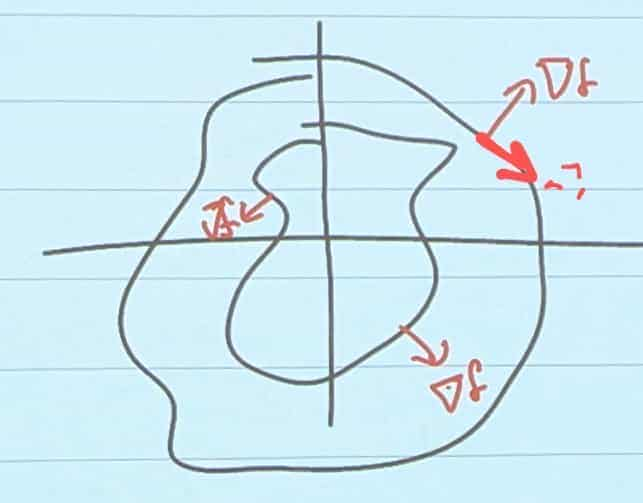
Linear Approximations
- By using the tangent line of an earlier point, we can approximate a later point on a curve
- Maybe that isn’t a great method of approximation… so let’s use higher derivatives to help!
- This is Taylor Series!
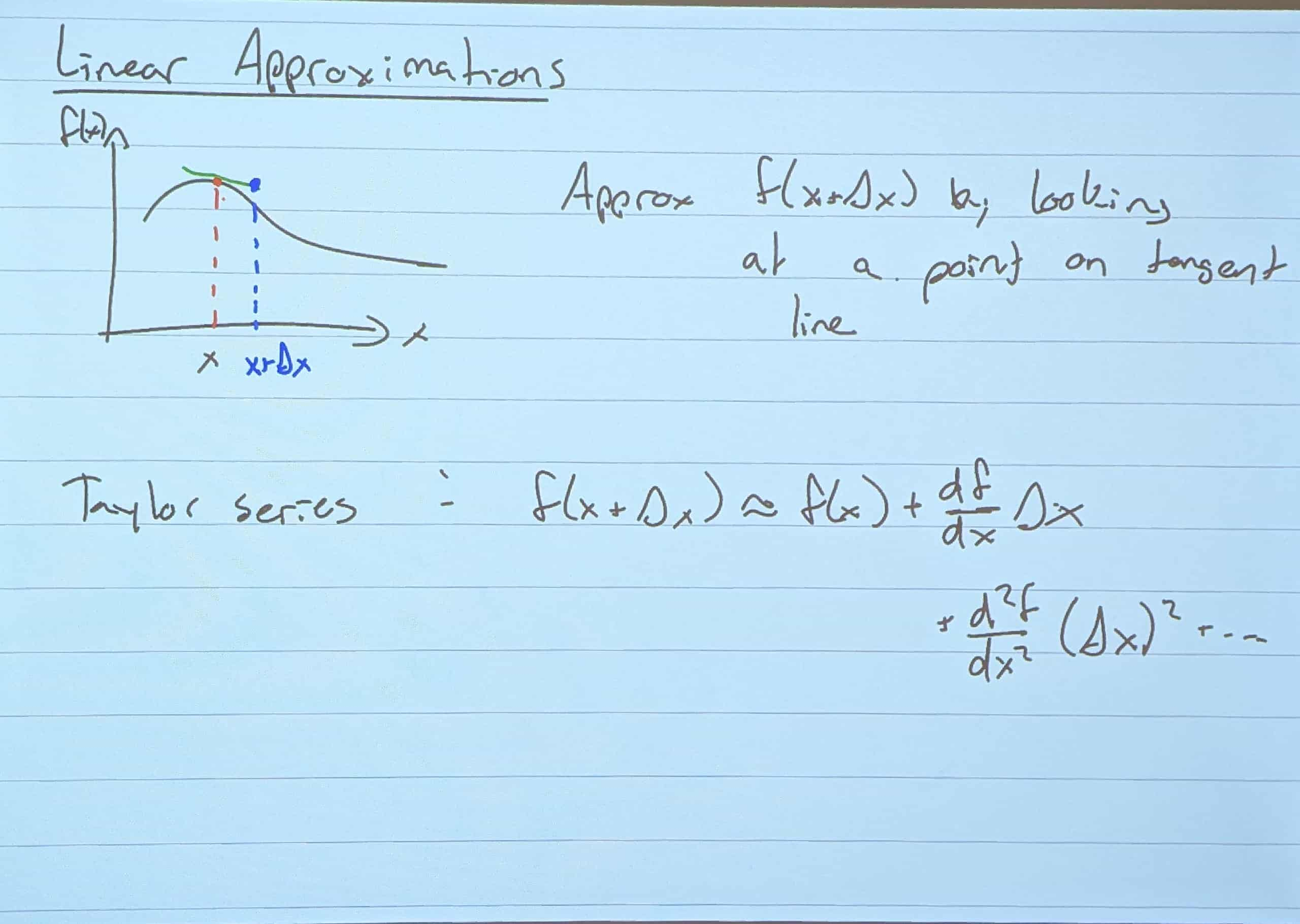
- What’s cool, is we can also approximate a “tangent plane” in a similar way!

- Usually, a first order approximation is… good enough. More so would be more accurate, but a pain to write out.
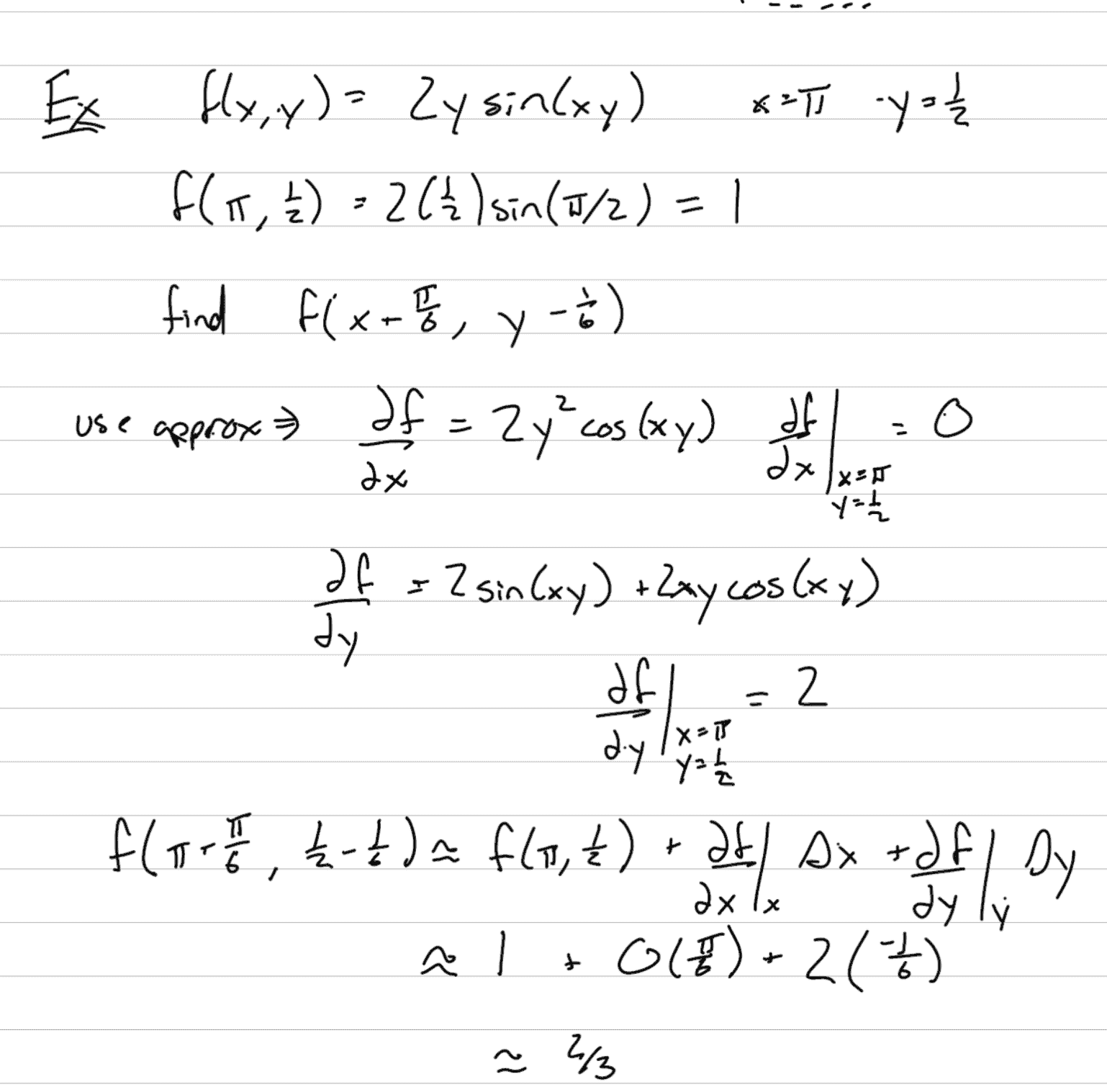
The Gradient is related to linear approximation!

Extreme Values (Minimums and Maximums)
For a single variable function y=f(x)…
-
Extreme Values of Y at x =c If f(x)<f(c) for x near c, you have a local max If f(x)>f(c) for x near c, you have a local min
-
Extreme Values occur at 3 types of points
- Critical Points ⇒ df/dx = 0
- Singular Points ⇒ df/dx = undefined
- Boundaries ⇒ The ends
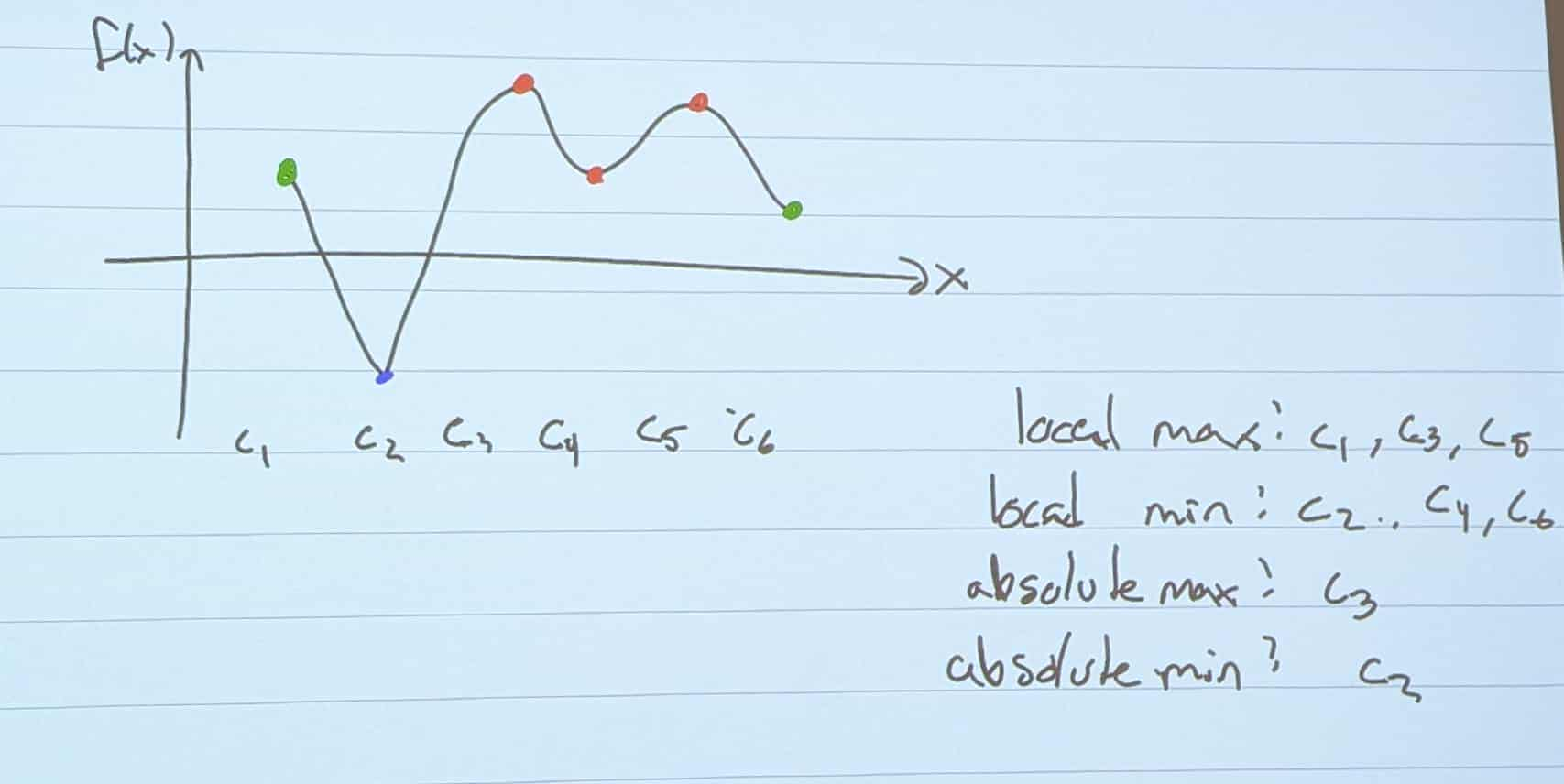
But what if we don’t have a graph?
- To find critical points:
- Take the first derivative of a function
- Set df/dx =0 and solve for X
- To determine minimum or maximum
- Take the second derivative of a function. This studies the rate of change of the rate of change
- If d2f/dx2 < 0 ⇒ You have a local max
- If d2f/dx2 > 0 ⇒ You have a local min
- If d2f/dx2 = 0 ⇒ Your curve is flat, and you don’t have enough information!
- If you have a case where d2f/dx2 < 0 at some point before the critical point, and where If d2f/dx2 > 0 after the critical point, or vice versa, you have an inflection point
For a multivariable function y=f(x,y,z,…)…
Types of Extreme Values
- Critical Points ⇒ Duf (The directional derivative) = 0 for all û (for all directions)
- Singular Points ⇒ Duf (The directional derivative) = undefined
- Boundaries ⇒ The ends
Finding critical points: ∇f = 0, solve for points
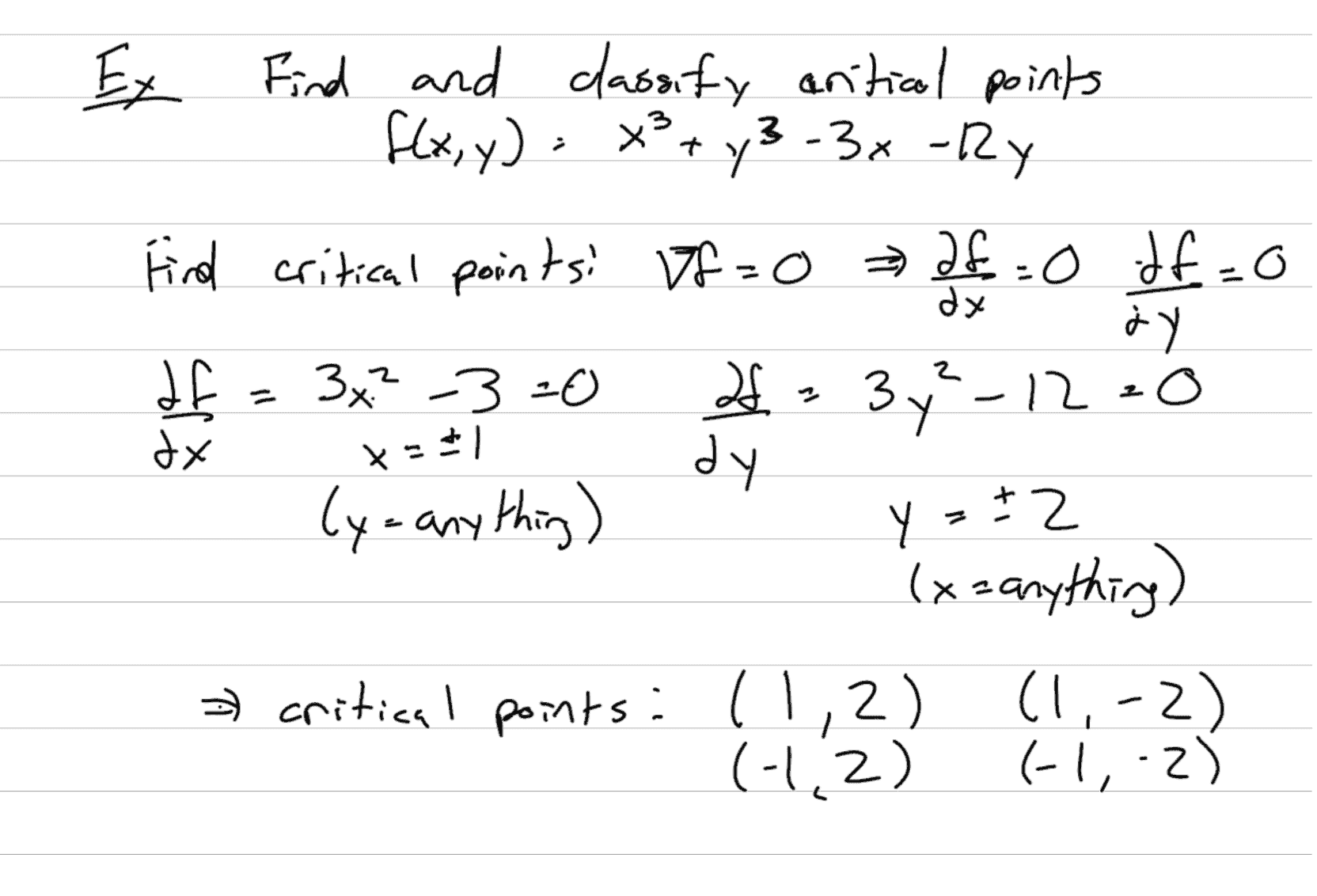
Second Order Directional Derivative! (very bad)

Remember:
-
The Gradient nabla operator (∇) vectorizes scalars. That dot product multiplied by the nabla is a scalar, being vectorized. It doesn’t visually mean anything, but makes things
-
Ux and Uy are direction vectors
-
To determine minimum or maximum
- Take the second derivative of a function. This studies the rate of change of the rate of change
- If d2uf< 0 for all û (for all directions) ⇒ You have a local max
- If d2uf > 0 for all û (for all directions) ⇒ You have a local min
- If d2uf< 0 for all û (for all directions) = 0 ⇒ Your curve is flat, and you probably have a saddle point (think the dip in a horse saddle)
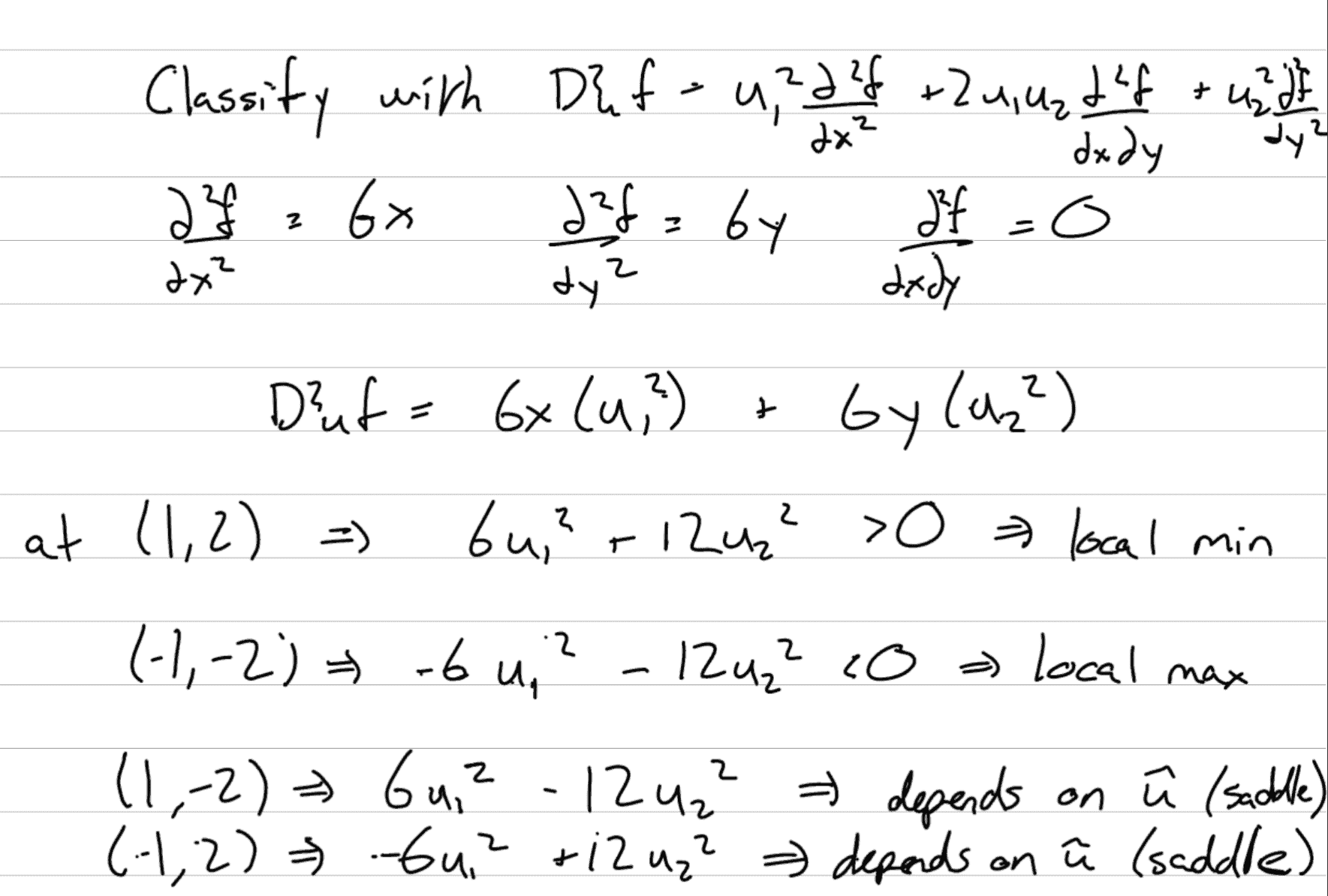
Restrictions
-
If you are given a restriction, such as x=2, the easiest way to solve the problem is to reduce the dimensionality.
- Just plug whatever your restriction is into the function, and solve for the other variable’s critical point.